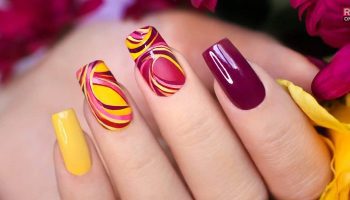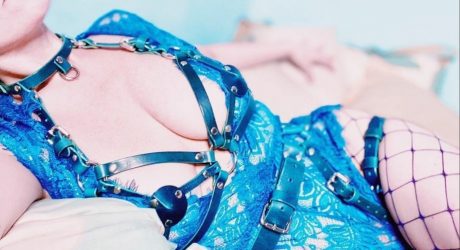If you have a passion for fashion, you have probably had the idea of becoming a fashion designer. It requires a lot of hard work, skills, and dedication. It is also a very competitive sphere. According to IBISWorld, there are 28,433 fashion designer businesses in the USA. Imagine how many people want to work there.
Contrary to popular belief about how easy it is to become a designer, not everything is as simple as it seems. First, it is necessary to complete a fashion design degree program. Second, you are required to be creative, detail-oriented, and know how to work with fabrics.
If you can be creative, put in a lot of effort, and have some business savvy, you can open many doors for yourself, whether you work for an established designer or decide to leap to start your own business.
In this article, we will share some essential tips to help make an informed decision about pursuing a career in fashion design.
Who Is A Fashion Designer?
A style creator sketches, structures, and assembles dress apparel. However, fashion designers are responsible for more than just designing clothes. In their designs, they frequently incorporate various cultural perspectives, aesthetics, and sources of inspiration. Designers work with many other professionals in the style industry, including hairdressers, vendors, tailors, outfit inventors, modeling agents, innovation companies, publication proofreaders, and others.
Fashion designers are also in charge of researching current fashion trends to create innovative designs. They frequently use various pieces of design software to create their works and collaborate closely with other specialists on various projects. When starting a new design project, they start with sketches, textile analysis, and prototype creation.
Where Can Fashion Designers Find Employment?
Fashion designers working for major fashion brands represent the wholesale and manufacturing sides of the fashion industry. In these roles, they produce clothing and accessories, which brands then sell to various retailers.
However, nearly one-quarter of the industry’s fashion designers work as freelancers, creating items under contract with various customers. Some designers also create high-end custom clothing or launch their clothing lines.
Fashion designers often work long hours to create fashion shows or meet production deadlines. In addition to the more traditional prêt-à-porter design, the style enterprise is a global business that is worth several billions of dollars with a wide range of sub-industries and career paths. Eyeglasses, outer clothing, sports clothing, accessory invention, shoes, handbags, and others are among the most popular pieces you should be ready for if you want to dive into this business.
Surefire Ways To Become A Fashion Designer
1. Obtain a Style Creator Grade From an Accredited Institution
Most of those employed in fashion design require a bachelor’s certificate in craft or innovation. During their time in a style creation program, students learn about fabrics, style thesis, and hue thesis.
Furthermore, they learn how to design styles using some essential software. Task-based studies assist students in style layout classes in improving their mastery and building their portfolios.
Fashion design degree programs typically require students to take courses in fashion merchandising, enterprise, and commerce. These are the skills that designers require to launch a fashion business, estimate client requests for various styles, and turn a yield.
Experts who have completed a fashion design program may create a clothing line for the school’s annual fashion show, thereby increasing their expertise.
According to Yocket, Rhode Island School of Design, Pratt Institute, School of the Art Institute of Chicago, and California Institute of the Arts are the top fashion design schools in the USA.
When choosing where to study, do not forget about safety measures. Nuwber has gathered information about the U.S. safest college campuses by state. See if the school you want to go to is on the list. If it is not, do additional research or ask anyone who studies there.
2. Get a Hands-On Exposure
A certificate in style configuration or marketing offers valuable training for a profession in the style endeavor. However, designers must also have practical experience. Students should seek internships in fashion design while they are yet at school.
A lot of colleges and universities connect aspiring designers with companies looking for graduate trainees. Trainees gain practical experience in their field of study by working under the surveillance of an adept style creator during an apprenticeship.
Trainees should examine opportunities to work part or on a contract basis and gain experience through apprenticeships. Working for smaller brands permits trainees to build their portfolios and prepares them to establish their potential clothing lines. Working with a well-known brand is advantageous for designers in building their portfolios and establishing valuable industry connections.
3. Network Within the Industry
Fashion designers and those working in other creative fields can find professional opportunities, secure clients, and advance their careers through effective networking. For aspiring designers, networking should begin as soon as possible, even before enrolling in a fashion program.
The opportunities to network with industry professionals provided by school networking events are valuable resources. Create relationships with different creators, vendors, customers, and others in the industry. When you begin freelancing or looking for professional work, those connections may come in handy and pay off.
4. Make a Portfolio of Your Work
For careers in the fashion industry, a robust innovation portfolio is needed. Before enrolling in formal fashion education programs, numerous potential style makers start compiling their portfolios. Students create portfolios to demonstrate their abilities and designs. Fashion designers, for example, may like to showcase their versatility in their portfolio by including both all-ready-made and bespoke classic looks.
Alternatively, they could highlight their creative expertise. Designers are expected to maintain their portfolios throughout their professions. Various experiences, such as apprenticeships, beginner jobs, and hairstylist positions, can benefit the portfolio.
5. Follow the Trends in the Fashion Industry
Keeping up with fashion news and trends is essential for those working in the fashion industry. Designers must devote time to staying current with the various fashion cycles because they work in a seasonal industry. They have access to a wide range of resources that assist them in staying current.
Fashion shows, professional associations, and magazines display the most recent trends and industry information. Following other fashion designers’ work and keeping an eye on red-carpet events are two other effective ways for designers to stay on top of emerging trends. Following that, designers can incorporate new looks into future projects.
Conclusion
A degree in fashion design may be beneficial in launching a career. However, a degree alone does not guarantee success. A strong portfolio, relevant work experience, and an established professional network are required for aspiring fashion designers to be successful in the industry.
Read Also:




























